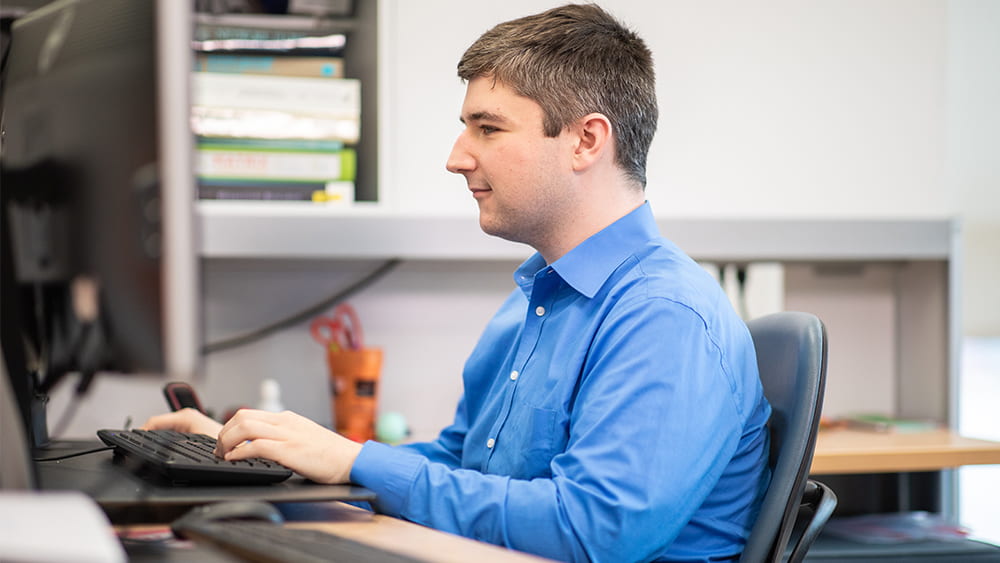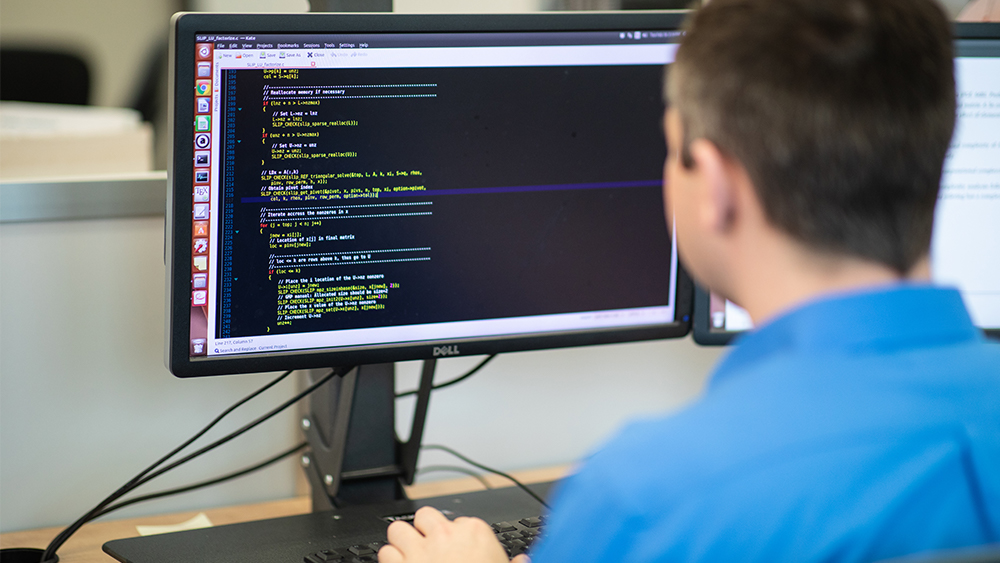
A conversation with Chris Lourenco, a doctoral student in the Department of Industrial and Systems Engineering.
Chris Lourenco will graduate in August with a Ph.D. in industrial engineering and set sail on a new adventure. He will be serving as a tenure-track assistant professor in the Department of Mathematics at the United States Naval Academy.
Before coming to Texas A&M University, he earned a bachelor’s degree in industrial engineering at Clemson University in 2015. Lourenco excelled in his operations research courses during his undergrad and, after visiting Texas A&M, decided to pursue his graduate degree in Aggieland.
Lourenco spoke about his new role and how he has prepared to take on an academic career.
Q. What drew you to the U.S. Naval Academy?
A. The U.S. Naval Academy is a very unique institution in that every student becomes an officer in the Navy or Marines after graduation. As a faculty member at the U.S. Naval Academy, I feel like I will have the opportunity to make a huge impact on the next generation of U.S. leaders.
Q. What will you do as an assistant professor?
A. My job is primarily focused on teaching, research and service. On the teaching front, I will be teaching undergraduate operations research, linear algebra and general mathematics courses.
Research-wise, I plan to continue to expand on the methods I have developed during my Ph.D. Specifically, I plan to continue developing novel algorithms which can revolutionize our ability to solve systems of linear equations exactly and continue my work in computational mathematical programming.
Lastly, the service component involves duties such as helping to develop new courses and curriculum, serving as a faculty mentor to student organizations, serving on faculty committees, and reviewing scientific papers and conferences.

Q. How did your experiences at Texas A&M prepare you for this role?
A. One thing I love about Texas A&M is how supportive the community is. The faculty are truly committed to the success of every student.
My advisor, Dr. Erick Moreno-Centeno, has helped me immensely over the course of my studies. Professionally, he has pushed me to be the best researcher and instructor that I can be. Personally, he has been an excellent mentor, always caring about my success and well-being, and going well above what I could ever expect from an advisor.
On the teaching front, last semester I won the Texas A&M Graduate Teaching Fellowship, which allowed me to teach a course. I taught my department’s undergraduate introduction to operations research course, which actually is the course that inspired me as an undergraduate to go to graduate school. It was an excellent opportunity to serve as the course’s instructor while also having the help and mentorship of my advisor. I believe this experience will help me hit the ground running as an instructor at the U.S. Naval Academy.
One thing I love about Texas A&M is how supportive the community is. The faculty are truly committed to the success of every student.
Q. What research did you do while at Texas A&M?
A. My research focuses on exactly solving sparse systems of linear equations. In short, there are many things we use on a daily basis, such as Google Maps and every Apple iPhone and MacBook, whose programming requires solving large-scale sparse linear systems. From an optimization standpoint, I became interested in this topic due to issues with modern linear and integer-programming solvers. Many people do not realize that the linear and integer-programming solvers that every operations research practitioner uses can produce incorrect solutions for up to 5% of real-world problems.

Using my methods, we can guarantee that the solution obtained from these solvers is indeed correct. Moreover, my methods are dramatically faster than the approaches currently used in exact linear and integer programming solvers.
Lastly, one very unique thing about my research is that there is also a large software component; thus, we make the code associated with my methods available to the general operations research, mathematics and computer science communities. I really enjoy working in this area because it is interesting in both the theoretical side of creating new algorithms and deriving new math, but it’s also very practical. For example, my methods have the potential to make drastic real-world impacts such as improving cancer treatment or optimizing the electric grid.
Some of Lourenco’s research is published online in the Society for Industrial and Applied Mathematics Journal on Matrix Analysis and Applications.
A few words of thanks
Lourenco has had many mentors during his undergraduate and graduate career whom he would like to thank.
At Texas A&M, aside from his advisor, Moreno-Centeno, Lourenco thanks Dr. Tim Davis in the Department of Computer Science and Engineering for his assistance, who helped him improve his algorithm development and coding skills, and for helping improve his software to a point where it could be used by other professionals in the field.
At Clemson University, Lourenco thanks Dr. Mary Beth Kurz and Dr. J. Cole Smith for their help sparking his interest in operations research and graduate school, and for preparing him to succeed as a doctoral student.